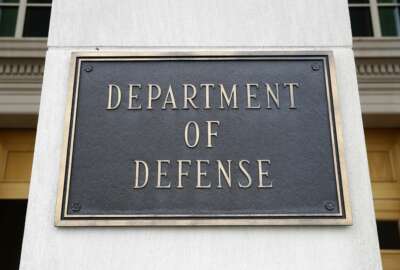

DoD is making some efforts to ease its classification restrictions to better partner with allies and industry.
More top space and intelligence officials are calling for the Pentagon to ease how much it classifies documents, calling the practice a vestige of the Cold War.
Maj. Gen. Charles Cleveland, associate director of operations for the Geospatial Intelligence Agency, and Gen. David Thompson, vice chief of space operations, told members of Congress that the military’s classification practices were harming the United States abilities in space.
“We now need to operate more broadly in coalitions we need to make sure that our leaders and the public are aware of our capabilities, our threats, and what we’re going about. It really does drive the need to declassify,” Thompson told the House Armed Services Strategic Forces Subcommittee.
Cleveland added that it’s not only in space, but in other broader areas that the military should rethink its classification policies.
“We need to be focused on how can we publish at a level that can be released immediately and enable both policymakers and decision-makers to share that information as needed,” Cleveland said. “We have a huge role in not only being prepared to declassify as needed but also to produce and to collect at an unclassified level to support our policymakers.”
POLITICO reported last month that nine of the 11 combatant commanders signed on to a memo urging the Pentagon to ease its classification levels.
“Unfortunately, we continue to miss opportunities to clarify truth, counter distortions, puncture false narratives, and influence events in time to make a difference,” they said about the current classification system in the memo.
Chief of Space Operations Gen. Jay Raymond has also come out saying he thinks the Defense Department is overclassifying.
Along with the concern that overclassification keeps partner countries from working well with the United States, space officials are also worried that it will keep industry from teaming up with the military.
The Pentagon is currently focused on speedy, innovative technologies. It’s not looking for highly exquisite weapons like in the past because the threat landscape changes so quickly. Instead, it wants weapons that are good enough and can be updated quickly. It also want to expand its industrial base to more nontraditional defense companies.
Working that model is hard when companies can’t see what the Pentagon is doing or what it needs.
DoD is making some moves to change its classification policies.
“We’ve made some significant steps in that regard and have more to go, but I would also say that both the National Air and Space Intelligence Center and Defense Intelligence Agency recently published some very, very good unclassified products on the threats we face and they been more forthcoming in those products than we’ve seen in many years,” Thompson said.
Raymond said that DoD is also working on a new policy to ease some of the highest classified materials.
Copyright © 2025 Federal News Network. All rights reserved. This website is not intended for users located within the European Economic Area.
Scott Maucione is a defense reporter for Federal News Network and reports on human capital, workforce and the Defense Department at-large.
Follow @smaucioneWFED


